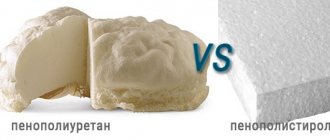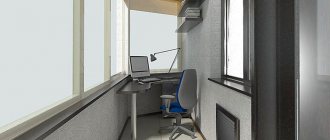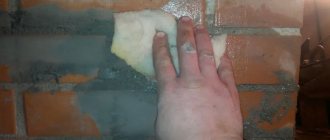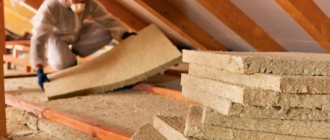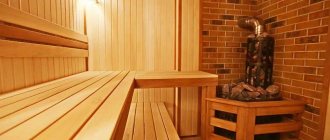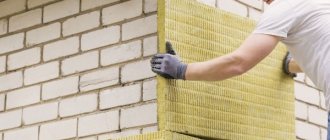External facade insulation systems are special structures that protect walls from the cold. Currently, there are several approaches to solving this problem, so the wide choice often leaves users with difficult choices.
There are many different systems for insulating facades on the market, each of which requires compliance with a number of norms and rules - from the selection of materials to installation.
Advantages of external thermal insulation systems
External insulation is considered the most popular - it has repeatedly proven its effectiveness. Internal thermal insulation, of course, also plays an important role in construction, but its advantages are incomparable to external ones. An external thermal insulation system has many advantages.
Reduced environmental impact
External insulation protects walls from overheating and hypothermia in any season of the year. As a result, the durability of the building increases, cracks do not appear on the facade, the plaster does not peel off, and the seams do not depressurize.
Exposure to moisture is eliminated: with external thermal insulation, the destructive effects of snow and rain are significantly reduced. There are also no ice formations in the thickness of the wall surfaces due to capillary moisture and its condensate.
Condensation protection
In the cold season, it is not uncommon for the temperature of the façade walls to drop below the “dew point”. As a result, condensation forms on the internal surfaces. The external façade insulation system prevents its appearance.
Smoothing or eliminating cold bridges
External facade insulation technology involves heat accumulation by the walls. As a result, the temperature of the coolant in the heating system decreases and the orientation of the building ceases to play a role - the temperature dependence disappears. “Bridges of cold” either smooth out or disappear.
Creating the perfect wall surface
Due to heat insulators, the wall structures of the building look smooth, and various defects inherent in stone and concrete are hidden by insulation.
High noise absorption
Most insulation materials are considered good sound insulators. Their use reduces noise coming from the street and creates a comfortable environment in the premises.
Durability
Although heat-insulating materials are constantly exposed to the environment, their production technology has long made it possible to create products that last for decades without losing their initial performance properties. 30-50 years is the average service life for any high-quality insulation.
Classifications
To protect the thermal insulation layer from destructive and pervasive atmospheric influences, various facade insulation technologies have been developed. Today, there are several options for external insulation systems for facades: wet and ventilated, siding, thermal panels, etc. Each technology has its own characteristic features.
Thermal insulation board
The efficiency of insulation work and the durability of the system largely depend on the façade slab. Facade insulation systems are made in two ways - contact and hinged. Contact methods - wet insulation, suspended methods - insulation of a ventilated facade.
If we consider the issue from the standpoint of cost, then the most economical and at the same time effective technology for insulating facades can be defined as thermal insulation systems with “wet” protection of each subsequent layer of insulation.
Dew point shift diagram
There are several options for placing insulation relative to the wall: inside, outside, between walls. The main thing to start from is the dew point. Let's look at all the options.
The dew point is the temperature at which water vapor in the air reaches saturation and begins to condense. The dew point at 100% air humidity and the actual air temperature are the same.
Based on current trends, insulating the exterior of a house’s facade is an excellent option for preserving heat. In this case, the dew point falls on the insulation, which means there will be dry walls inside. Otherwise, the outside of the wall will freeze, and the internal areas will become wet and moldy. This process is shown more clearly in the figure.
Contact method
Contact insulation is based on the use of special plates made from different raw materials. This includes mineral wool, polystyrene foam, and cellular glass. For finishing, thin-layer decorative plaster is used.
Plaster finishing simultaneously performs a protective and decorative function. Considering the quite reasonable cost of insulation, the facade becomes both beautiful and quite warm. The thermal insulation system of the facade is applicable to residential buildings, both existing ones and new buildings.
Such a facade makes it possible to reduce the thickness of the walls and increase them in terms of energy savings and noise insulation. The fire safety of the “wet facade” in question is also noted.
In addition, the “wet method” does not actually increase the load on the structure of the structure. When using this technology, there is an undeniable possibility of continuous thermal insulation, even despite the impressive area of the facade.
Types of contact systems
There are two types of contact insulation system for facades - light and heavy wet method. In the latter case, the functions of the supporting structure are performed by a metal mesh, which is connected to the wall and insulation with fasteners (braces and spacers).
The easy wet method involves installing a heat-insulating layer consisting of facade slabs with glue to the outer part of the wall. After fastening, the insulation material is again covered with glue, on top of which a reinforced glass fiber mesh is placed. If necessary, the slabs are attached to the wall not only with glue, but also with dowels.
The load-bearing function falls on the heat-insulating facade slab. A reinforcing layer is distributed over the fiberglass mesh. As a rule, the total thickness of all layers is no more than 9 mm.
Work order
External wall insulation can be used for any type of insulation. This depends on its technical characteristics and the chosen thermal insulation system. The installation algorithm is different.
"Well" insulation
It is carried out during the construction of walls or when facing the facade with clinker or facing bricks. The method is expensive, but very reliable.
- The surface of the wall is cleaned of debris, deep cracks and chips are cemented or plastered.
- Mounting anchors are placed on the wall.
- Mineral wool slabs are placed on anchors. On the outside of the insulation, the anchors are closed with special clamps.
- A brick wall is being erected. The insulation ends up in a cavity inside the wall.
- Masonry joints are rubbed with cement mortar or decorative plaster.
This option is only possible when cladding a stone, concrete, or aerated concrete structure.
Option with lathing
This method is used more often, as it is more accessible and can be done by hand.
- A lathing made of wooden blocks with a cross-section of 50*50 mm is mounted on the façade. The step between the racks is 60–70 cm. The mineral wool slab should be placed spaced apart between the racks.
- When insulating in 1 layer, the material is cut to size and the slabs are inserted into the resulting cavities. If necessary, you can fix the material with disc dowels.
- If insulation is carried out in 2 layers, after laying mineral wool in 1 layer on a vertical sheathing, install a horizontal one with the same step. The second layer of insulation is placed between the frame crossbars. You need to ensure that the material is laid out staggered.
- The thermal insulation system together with the sheathing is covered with a waterproofing film. It is recommended to use special hydro- and windproof membranes. The film is laid overlapping, the joints are taped. The material is secured with staples.
- Finishing - siding, lining, plank, should be 5-6 cm away from the insulation layer. To do this, install a third sheathing, onto which the siding is fixed.
If the insulation was laid in one layer, it is more rational to take bars for the frame grille with a height sufficient for the ventilation gap to appear automatically. If this is too expensive, sheathing is mounted on the main frame, and then the trim is attached.
If mineral wool is used, there is no need to lay a vapor barrier inside the room. The vapor permeability of the insulation is high, so the dew point will still be brought outside.
Insulation with polystyrene foam under plaster
If the walls are well even, it is often performed not on lathing, but as a “wet” facade. The technology is very simple.
- The surface of the wall is cleaned and puttyed with the same composition on which the foam material will later be attached. The layer should be as dense as possible.
- A special glue is used to fix the plates. It is usually applied to the back surface of the slab and leveled with a notched trowel. If the walls are very uneven, masonry adhesive can somewhat level the surface.
- It is recommended to fasten a corner shelf at the bottom as a starting strip. The device will help level the insulation layer.
- The slabs are cut to size, if necessary, lubricated with glue and pressed against the surface for several tens of seconds. The slabs are placed end to end. If gaps still form, they are filled with scraps of material.
- Fasteners with glue are duplicated with dowels. They can be placed at joints to reduce the total amount of fasteners.
If expanded polystyrene slabs are plastered, and this is most often done, a reinforcing mesh is placed on top of the assembled layer of thermal insulation. Then the surface is primed and a layer of plaster is applied.
If a greater thickness of the heat insulator is required, thinner slabs are laid in 2 layers.
The technology of insulation with liquid polystyrene foam is noticeably different . In this case, the wall or base is also cleaned, sometimes primed, and then the material is sprayed onto the surface. For a large area, only a master can do this, since special equipment is needed to spray the layer. But if the areas are small, you can take polyurethane foam in cylinders. Apply the material using a special nozzle-gun. You can do such work yourself.
Advantages of the easy “wet” method
The advantage of facade insulation systems made using the light wet method lies in the location of the so-called “dew point” outside the wall. Thanks to this, the problem of “cold bridges” that can reduce thermal insulation disappears.
Another plus is that the living space is not reduced, because all the necessary work is carried out outside. Insulation materials are also universal materials in terms of finishing. Based on them, you can implement an aesthetically attractive architectural project of almost any complexity - for example, decorating walls with marble chips or tiles.
Flaws
This approach has some disadvantages:
- foam has very low vapor permeability characteristics - sometimes this causes discomfort due to high humidity;
- the problem of the integrity of the external finishing of the facade during shrinkage processes is not solved if the plaster layer functions for shear;
- even with very low vapor permeability, the outer layer of the finish, as well as the adhesive composition, is saturated with moisture.
Installation of a contact system has its own characteristics. One of them is careful preparation of the base.
If the structure is installed using the light wet method, the minimum ambient temperature should be at least 5°C. The low maintainability of local areas turns replacement into a labor-intensive undertaking.
Briefly about the main thing
The wet facade is a multi-layer external cladding of a house without a ventilation gap, which includes the following structures:
- Glue.
- Insulation.
- Reinforcing mesh.
- Plaster.
- Finishing.
Among its main advantages are:
- Good indicators of heat, wind, moisture, noise insulation.
- Ease.
- Durability.
- Resistance to external factors.
- High aesthetic qualities.
Disadvantages include the need to strictly adhere to installation requirements - temperature, humidity and weather conditions
During installation, it is important to consistently carry out the stages of the technology. Therefore, it is better to entrust the procedure to a professional team.
Mounted systems
Wall mounted facade insulation systems are considered more modern and have many advantages over the contact method:
- their use makes it possible to reduce energy costs for heating by more than 1.5 times;
- no need to prepare the base before installation;
- can be installed at any time of the year;
- service life is about 30 years.
Insulation boards in this case are attached to the surface mechanically - dowels or load-bearing elements are used. At a distance of 2-5 cm from the outer part of the heat insulator, elements of external finishing are placed, which perform two functions at once: the first is decorative, the second is protective.
The surface layer of the system is made of various materials - from stone and metal to ceramics and wood. You can decorate the facade with glass, which has become very popular in the decoration of office buildings. In this case, the insulation board is covered with white or black glass fiber canvas. An important advantage of ventilated facades is the removal of moisture accumulated in rooms without forced ventilation.
For the manufacture of curtain-type facades, sandwich panels are often used - structures consisting of a heat-insulating core and 2 steel sheets. They are suitable for finishing both new and reconstructed buildings. Products from different manufacturers differ in color, size and other features. However, high-quality sandwich panels are united by high reliability, durability and wide functionality.
Advantages of complex systems for facades
When using facade insulation systems, the color scheme of the facade can be changed at any time. Taking into account the thermal insulation system of the facade at the design stage of the building saves on expensive building materials for walls. The difference in price for a medium-sized building with and without insulation is on average about 150 thousand rubles, but if you take into account the heat savings, such finishing will pay for itself by reducing heating bills within 5-7 years.
If the structure is built from foam concrete, based on the insulation system, it is possible to use a block whose thickness is 10-15 cm thinner. When erecting a building made of brick, the fence structures are mounted in one brick and are 64 cm.
Standards
Everything that happens in the atmosphere, including the phenomena of natural cycles and the consequences of technogenic human activity, causes increasingly sharp temperature changes, which is strongly reflected on the surfaces of structures and buildings. Without additional protection, facades gradually deteriorate under the aggressive influence of the environment.
As a result of such exposure, the building cannot effectively conserve heat during the cold season. Today in construction it is believed that, regardless of what material the walls were built from, it is necessary to carry out auxiliary insulation with a material at least 50 mm thick.
According to Russian standards, for a brick-silicate wall built with 1.5 bricks, it is necessary to use insulation with a thickness of 100-120 mm. Such a house will fully comply with current energy efficiency requirements. Naturally, the market value of such a house with subsequent insulation using facade insulation technology increases almost 2 times, but an insulated facade will subsequently bring serious savings on repairs and heating.
Criteria for choosing insulation
When selecting facade insulation, it is necessary to take into account the type of wall material, thickness, architectural features and dimensions. Climate and weather conditions are also taken into account. The thickness of the insulation layer is determined by the building density of the area - a building that stands alone requires a larger layer of insulation than a house located in the central part of a densely populated village.
The thermal insulation layer in facade systems is made from extruded or ordinary polystyrene foam, as well as from laminated or ordinary mineral wool. Both types of material are supplied in slabs. Mineral wool is made from glass, soda, limestone and sand. Its structure is represented by glassy thin fibers. Positively distinguished by high vapor permeability.
Expanded polystyrene is a polymer that has the following positive qualities: it does not enter into chemical reactions with other substances, is resistant to moisture and is not susceptible to rotting and fungus. It is recommended for use for insulating plinth slabs. According to statistics from the last 3 years, consumers prefer systems made of polystyrene foam as the cheapest material.
Insulation of external walls with mineral wool
| Name | Price |
| Thermal calculation | For free |
| Geodetic survey | 20 rub/m2 |
| Design work | 70 rub/m2 |
| Installation/dismantling of frame scaffolding | 120 rub/m2 |
| Marking walls for brackets | 50 rub/m2 |
| Installation of brackets | 150 rub/m2 |
| Attaching extension cords | 100 rub/m2 |
| Installation of the first layer of insulation | 200 rub/m2 |
| Installation of the second layer of insulation | 100 rub/m2 |
| Installation of guides | 200 rub/m2 |
| Fastening the facing layer | 600 rub/m2 |
| Construction of a subsystem for a parapet cover | 500 rub/m2 |
| Installation of parapet sill | 400 rub/m. |
| Installation of ebbs, slopes, drips | 350 rub/m. |
Installation
You can install a facade insulation system with your own hands, however, specialists with experience will cope with this task faster. Insulation work involves several stages, after each of which you need to check the absolute evenness of the surface, cleanliness and smoothness.
It is very important that there are no depressions or cracks on the surface of the walls - otherwise the finishing layer will not be continuous, and the thermal insulation will become ineffective.
Differences in materials
Weather requirements are the same for both mineral wool and expanded polystyrene. The technology in both cases is virtually identical, and only the fastening method differs. Glue is applied to polystyrene foam boards over the entire surface, around the perimeter, or in “patches”.
In the case when polymer insulation is fixed to plastered walls, in addition to glue, dowels are used, at a rate of at least 4 per 1 m2. For mineral wool slabs, mechanical fastening is mandatory. Dowels with a tip made of galvanized steel are used.
The next point that requires special attention is the hydrophobicity of mineral wool. On this basis, before applying an adhesive solution to the surface of the slab, it is first puttied with an identical solution. Next, a layer of reinforcement must be applied to the thermal insulation slabs; after setting, it is primed with plaster mixture.
The plaster backing compound of the wall protects the building for 6 months if work is suddenly suspended. The procedure for applying the plaster itself summarizes. When directly applying and drying the plaster, temperature indicators should vary in the range from +5С to +25С.
Calculation of insulator thickness
To determine the thickness of insulation for a home, you can use special Internet resources where you can find online calculators for calculations. Please note: the resulting number can only be an estimate. Things to consider:
- Thickness of external walls.
- The level of their heat resistance.
- Specific climate in a given area.
- Temperatures for each season.
- Features of thermal conductivity of insulation.
Knowing this information, you can calculate the required thickness of the insulation material. You can make the calculations yourself or seek advice from a specialist who will insulate your facade.



